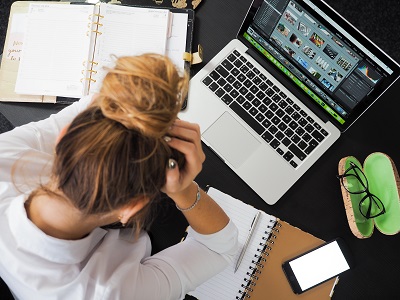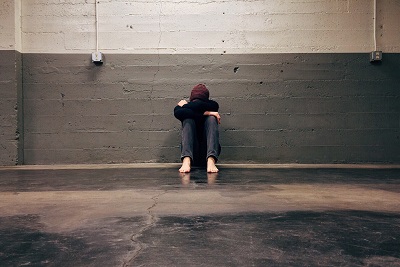Contents
Anxiety and symptoms change with people. Therefore, it is essential to know the ways anxiety can represent itself. When we are stressed, anxiety is our body’s natural response to it. It is a feeling of fear about future events. Occasional anxiety could be a part of the parcel of life these days. But if one has intense, excessive, persistent worry about everyday situations, this could be anxiety disorders. It cause repeated episodes of feelings of severe anxiety and fear.
It could reach a peak within minutes and become panic attacks. Giving a speech to many people or a job interview may make one anxious. But if the feeling is extreme, lasts longer than 5-6 months, and interferes with our life, we might have a type of anxiety disorders. Untreated anxiety disorders can cause chronic health issues, such as heart disease. Therefore, we need to identify anxiety and symptoms quickly and efficiently.
Anxiety and stress
Anxiety and stress are opposite sides of the same coin. Stress is a feeling of mental and emotional tension. It can come from an event or a thought that makes us feel frustrated or nervous. A challenge or demand of our brain or body can cause stress. Anxiety refers to worry, fear, unease, nervousness, or frustration. It is the reaction to our stress.
Both anxiety and stress cause physical and mental symptoms. These include: (anxiety and symptoms)
- Headache
- Stomach ache
- Fast heartbeat
- Sweating
- Dizziness
- Jitteriness
- Muscle tension
- Rapid breathing
- Panic
- Nervousness
- Difficulty concentrating
- Irrational anger or irritability
- Restlessness
- Sleeplessness
What is anxiety disorder?

As told earlier, it is normal to feel some extent of anxiety in our day-to-day lives. It could be a job interview, starting a new job, moving to a new place, exams, etc. This type of anxiety might not be pleasant, but it could motivate us to work harder and perform better.
When the feeling of fear is always with us, it is an anxiety disorder. Anxiety disorders are one of the most common forms of emotional disturbance. It can affect anyone at any age.
What are the types of anxiety disorders?
- Panic disorder: Suddenly, recurring panic attacks happen.
- Phobia: Excessive fear of a specific object, situation, or activity.
- Social anxiety disorder: Fear of being judged by others in social cases.
- Obsessive-compulsive disorder: Irrational thoughts that lead one to perform specific, repeated behaviours.
- Separation anxiety disorders: Fear of being away from loved ones
- Illness anxiety disorders: Health anxiety.
- Post-traumatic stress disorder (PTSD): Anxiety following a traumatic event.
Generalized Anxiety Disorders – Anxiety and symptoms
Generalized Anxiety Disorder is a constant level of stress in life without being exposed to external stress factors. It can develop into phobias or irrational fears. Examples of triggers could be fears of someone breaking in, the house catching fire, etc. GAD (Generalized Anxiety Disorder) is one of the main reasons that turn some people to alcohol as self-medication.
Social Anxiety Disorders – Anxiety and symptoms
Social Anxiety Disorder is chronic anxiety under social circumstances. Sometimes it is incorrectly interpreted as shyness. But it is an anxiety disorder when someone is exposed to social settings or is involved in a social situation. Agoraphobia (the fear of being stuck far from home) can arise out of being in social situations. People under this type of disorder can imagine things that can happen if they cannot reach home, people hating them, etc.
Panic Anxiety Disorders – Anxiety and symptoms
Panic Disorders are prone to recurring and create severe panic attacks. They are persistent. Panic attacks show symptoms such as sweating, pounding heart, shaking, choking, shortness of breath, etc. Intense panic attacks are very similar to heart attacks.
Other Anxiety Disorders – Anxiety and symptoms
Anxiety disorders are dangerous, but some are more notorious than others, such as obsessive-compulsive disorder (OCD) and Post-Traumatic Stress Disorder (PTSD).
What are the symptoms of anxiety?
Anxiety symptoms change with people. Therefore, it is crucial to know the ways anxiety can represent itself. One might feel like losing control and disconnection between body and mind. People could feel a racing heartbeat, nightmares, panic attacks, etc.

Top anxiety signs and symptoms include:
Anxiety and symptoms in a glimpse
- Feeling nervous, restless, or tense
- Having a sense of impending danger, panic, or doom
- Having an increased heart rate
- Breathing rapidly (hyperventilation)
- Sweating
- Trembling
- Feeling weak or tired
- Trouble concentrating or thinking about anything other than the present worry
- Experiencing gastrointestinal (GI) problems
- Having difficulty controlling worry
- Having the urge to avoid things that trigger anxiety
- Restlessness
- Difficulty falling asleep
What is an anxiety attack?

When the feelings of normal anxiety become overwhelming with more significant worry, distress, or fear, it becomes an anxiety attack. Sometimes anxiety attacks build slowly and become more worrisome when a stressful event approaches. Symptoms of an anxiety attack differ from person to person. These symptoms change over time, and we don’t see the same signs in everyone.
Top symptoms of an anxiety attack include:
- Feeling faint or dizzy
- Shortness of breath
- Dry mouth
- Sweating
- Chills or hot flashes
- Apprehension and worry
- Restlessness
- Distress
- Fear
- Numbness or tingling
Anxiety and panic attacks share some common symptoms, but they are not the same. One should be aware of the symptoms and understand what kind of anxiety is suffering from. Learn how to diagnose and treat anxiety.
References
- Anxiety disorders and panic attacks. (n.d.). Umich.edu. Retrieved August 2, 2022, from https://uhs.umich.edu/anxietypanic
- CDC. (2022, April 19). Anxiety and depression in children. Centers for Disease Control and Prevention. https://www.cdc.gov/childrensmentalhealth/depression.html
- Pain, anxiety, and depression. (2021, September 16). Harvard Health. https://www.health.harvard.edu/mind-and-mood/pain-anxiety-and-depression
